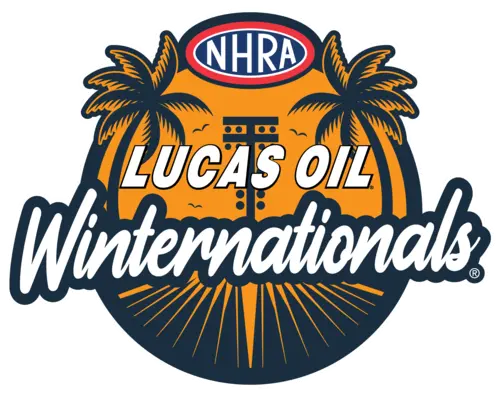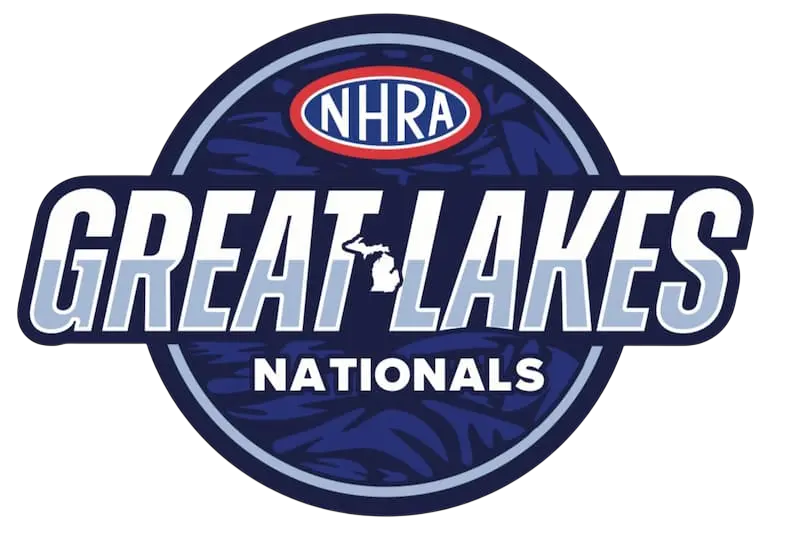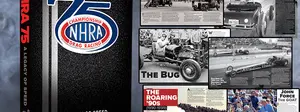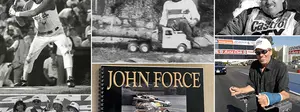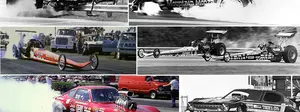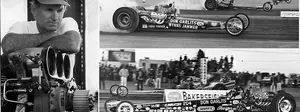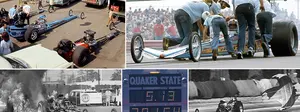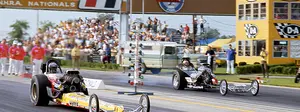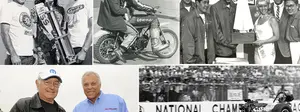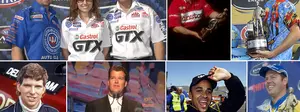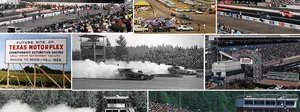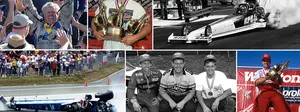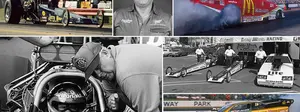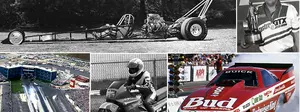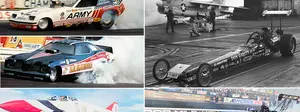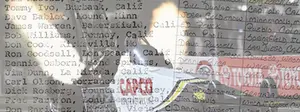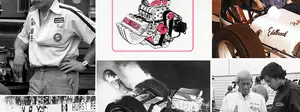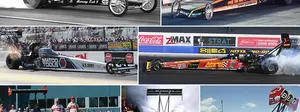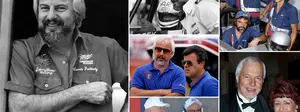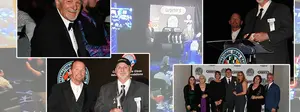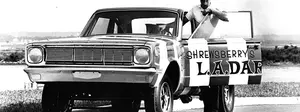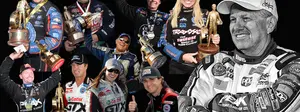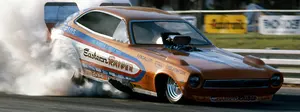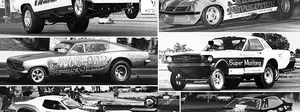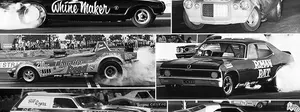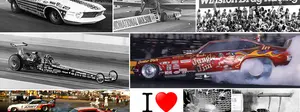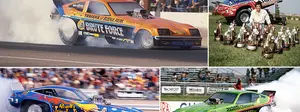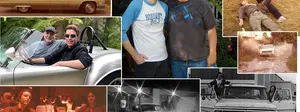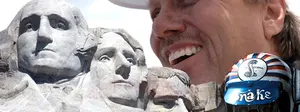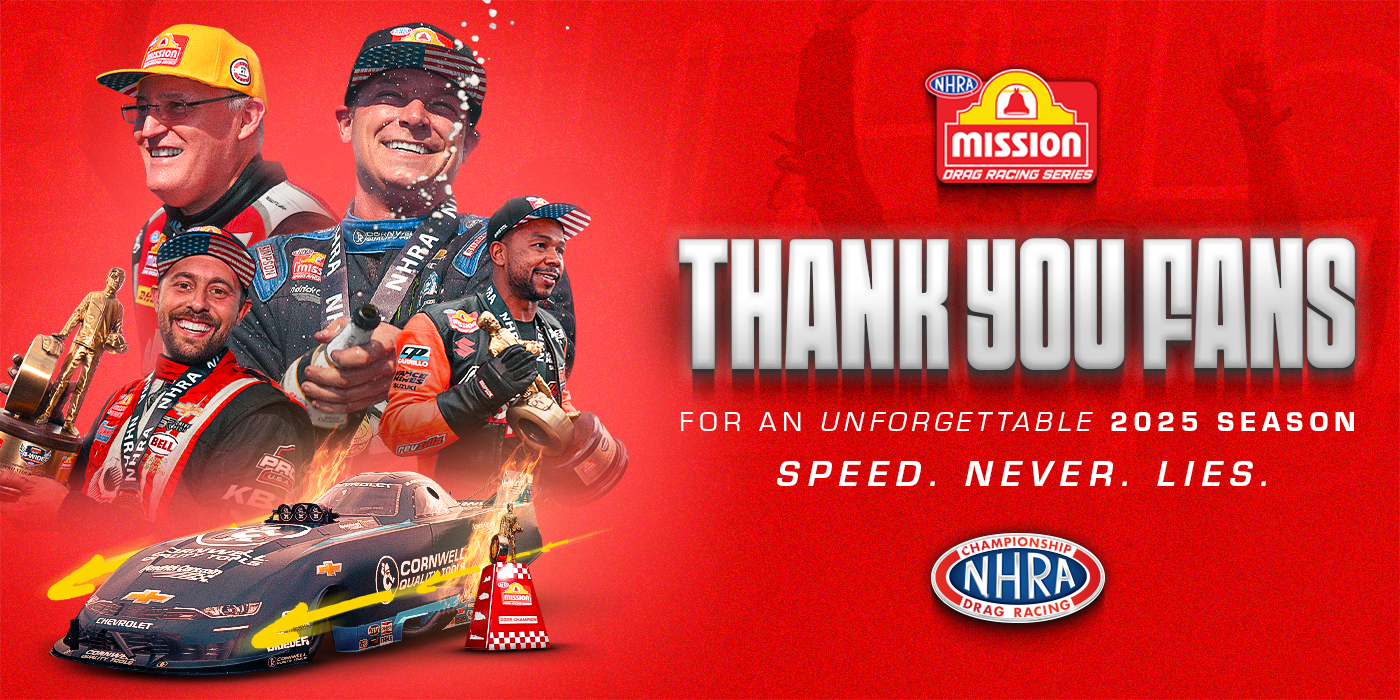

Swamp Rat Spotter's Guide, Part 2
OK, we're back on the hunt of the elusive Swamp Rat. … Well, I guess not really elusive, seeing as how I'm cribbing from Don Garlits’ book Don Garlits and His Cars and giving you my interpretation of his recount about the construction, life, demise, and sometimes resurrection of his famous line of dragsters.
Yes, I'm well-aware that Garlits' website has a car-by-car breakdown, but I didn't use it as a resource because the book presumably includes newer thoughts and information, plus this is my outsider's view of the historic iron, which I do for myself as much as the column.
Anyway, when last we left you, tired old Swamp Rat X had just retired itself at the 1967 Springnationals in Bristol, so Garlits and company headed south to begin work on Swamp Rat XI. I've also added years of life for each Rat in this edition (and will go back to the previous column and do the same).
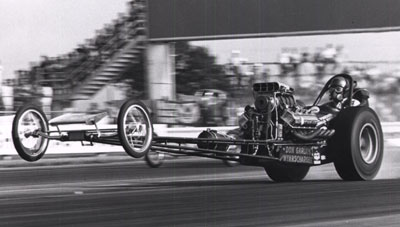 |
Swamp Rat XI (1967): Built in just 72 hours by Garlits, on-again/off-again crewmember and car builder Bob Taaffe, and Jim Marrone, this 190-inch car would star in one of Garlits' signature moments, the shaving of his beard after winning the Nationals later that year. The car, which lacked any front bodywork, debuted with a match race win over Roland Leong's Hawaiian in Muncie, Ind., and Garlits was hungry for an NHRA victory. He hadn’t won an NHRA national event since the 1964 Nationals, and while many of his peers were routinely running in the sixes, he had been kept out of that zone by the poor performance of Swamp Rat X, leading many to call Garlits "washed up" at age 35. They should have known better. Despite qualifying just 23rd, the loan of a set of new M&H tires from eventual final-round opponent James Warren had Garlits solidly in the 7.0s. After a 7.01 in the semi's, Garlits cranked out the memorable 6.77 in the final (just a hundredth off of Chuck Kurzawa's 6.76 low e.t.), and the rest is history. Incredibly, the car didn’t stay in Garlits’ garage long: He sold it to Carl Schiefer of Schiefer Manufacturing as a display car. Schiefer later sold it to Sunbeam, and it actually ended up in Hollywood at the Cars of the Stars Museum. When the museum closed, they called Garlits to see if he wanted the car back. What do you think he said?
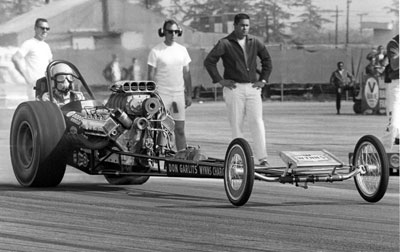 |
Swamp Rat 12-A (1968): Garlits wanted a shorter car to work better on West Coast strips, so SR 12-A (note the switch to Arabic numerals) was built with a wheelbase of just 137 inches. The car ran at the 1968 Winternationals but not well, so Garlits sold it to some Sportsman racers, who later crashed it. Garlits built them another car, taking the wrecked 12-A back as part of the fee. He held on to it until 1987, when it got a new front half, but it still was not displayed. In 2007, Chrysler asked Garlits to put one of its new 392 Hemis in his cars, and he chose 12-A. The car got a new nosepiece by Jim Hunnewell — Garlits' common help in all of the Swamp Rat restorations — to cover the same bare frame that XI had, as well as fresh lettering. This hybrid car made its debut at the California Hot Rod Reunion, appeared at the SEMA Show, was featured in a Mopar commercial, and is the one that Garlits cackled at the recent Gatornationals.
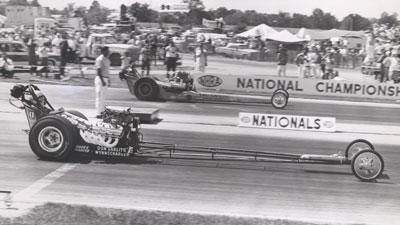 |
Swamp Rat 12-B (1968-69): Making a 180-degree turn in philosophy, at 215 inches, SR 12-B was longer than even XI. It was one of the first cars to receive a 240-mph time slip (albeit on Alton's somewhat sketchy timers) and won the Springnationals and the Nationals, then capped the season by winning the championship of the three-race PDA series in California. The car began life, like XI and 12-A, with bare tubing from the engine forward, but by year's end, it was enclosed in Tom Hanna bodywork and enjoyed sponsorship from TV comedians the Smothers Brothers. Garlits broke his leg in a motorcycle wreck that winter, and that combined with the departure of Taffe, who went back to work in the family business, caused Garlits to keep 12-B in action for 1969. Swingle had returned to the camp (again) and brought with him a "nice young man" (Garlits' words) from Bixby, Okla., Thomas "T.C." Lemons, whose name would come to be written into history alongside Garlits' for years to come. They campaigned this car heavily, but the frame became tired after a year and a half on the road and broke several times. The car sat in the Garlits shop for a year before Wynn's called and asked for a show car to take to Europe. In 1983, Garlits asked Wynn's to track down the old gal, and it was found in a warehouse in Holland in sad shape. It had been painted gold and the headers of the dummy engine outfitted with lights that illuminated (along with a tape-recorded vroooom) when someone pushed the gas pedal. It was beat to heck from all of the people who had been allowed to sit in it; it took some doing, but the car was fully restored and is in Garlits' museum.
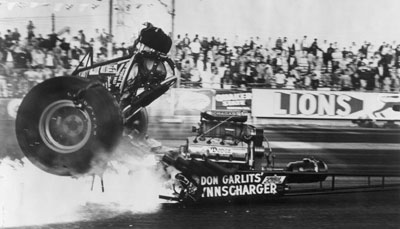 |
Swamp Rat 13 (1969-70): Built in a hurry by Garlits and Lemons (Swingle was fishing, much to Garlits' disdain) in hopes of making the 1969 NHRA Springnationals in Dallas. They match raced the car everywhere and anywhere, including in Amarillo, Texas, where a shutdown-area bump tore Garlits' bladder, causing a near-fatal case of uremic poisoning, but the worst was still to come for the unlucky 13. Garlits had begun experimenting with Leonard Abbott’s two-speed transmission in late 1969 but found that its 1950 Ford internals wouldn’t hold up to the power of a nitro mill, so Garlits made his own out of parts from a Chrysler 727 Torqueflite, dubbing it the Garlitsdrive. The transmission worked well and won him several races at year's end but exploded on the starting line March 8, 1970, in the final of the AHRA Grand American opener at Lions Dragstrip, severing half of his right foot. While he was recuperating in the hospital and scheming about his soon-to-be revolutionary rear-engine dragster, Garlits sold SR 13 to Lemons, who hired Swingle to drive it. Garlits went to Bristol for the AHRA Springnationals that year to watch Swingle and Lemons run, but they couldn’t get the car into the show. Garlits, against the wishes of (and promises to) his wife, jumped in the car and put it in the field. He then was hired by Lemons to drive the car for 40 percent of the take, the only time that Garlits ever drove for someone else (and in his own ex-car, to boot!). At year's end, Lemons sold the car to Art Malone, who ran it for a time then resold it. Garlits spied the car a few years later being campaigned in the Sportsman ranks with small-block Chevy power, bought it back, and restored it.
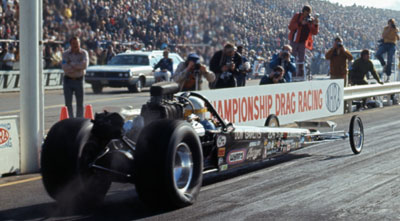
Revolutionary Swamp Rat 14, without and with a rear wing
|
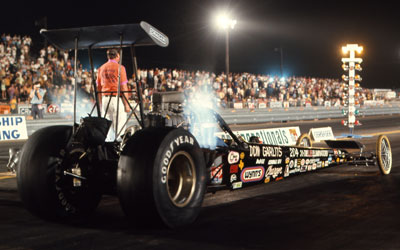 |
Swamp Rat 14 (1970-71): If ever there was a truly legendary car among Garlits' many legendary cars, it's this one: not the first rear-engine car ever built, but certainly the first successful one, and a car that changed the face of modern Top Fuel racing. Built in late 1970, the car almost never made it to its legendary 1971 Winternationals victory party. Had there been a guardwall at Tampa Dragway where the car veered sharply off track several times before Garlits got the steering ratio right or had the tumbling engine out of the John Collins-driven Atlas Tools Funny Car rolled an inch or two left or right as it bounded over the cockpit of the car in the shutdown area at Lions Dragstrip in early 1971, I might be telling a different story. It took three months of testing to get the car right and set the stage for history in Pomona, and even then, no one wanted to run alongside the car at Lions, where Garlits took runner-up honors, and when he won Pomona and the Bakersfield March Meet, the handwriting was on the wall. A month later, Garlits added a rear wing to the car (his first wing since Swamp Rat V-A in 1963). This car also was part of the drag racing moment that Garlits told me he most regrets: engaging Steve Carbone in a burndown in the Nationals final, in which a superheated engine made too much power and Garlits smoked the tires. Garlits sold the car to Carl Casper for a show car with the stipulation that it never be raced. Garlits traded Casper a new car in 1983 to get SR 14 back. It was housed at the NHRA Museum for a decade before ending up back at Garlits' Swamp Rat shrine in Florida.
Swamp Rat 15 (1971): Built as backup in case the rear-engine car didn’t work, this is the last slingshot that "Big Daddy" and company built. Garlits' wife, Pat, aghast at seeing another front-engine car under construction, told him in no uncertain terms that he had better get rid of it. The car was taken to California inside the same trailer as the rear-engine car and sold to Goodyear as a display car. The car stayed on the show circuit for several years before being heavily damaged in transport and offered to Garlits. Lemons and Garlits fixed 'er up and loaned it to the Florida Sports Hall of Fame and most recently to Summit Racing, which had the car hanging from the ceiling of its showroom in McDonough, Ga.
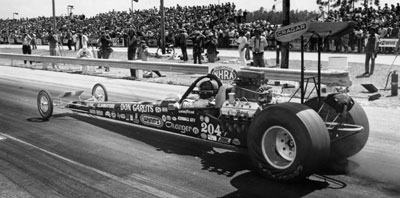 |
Swamp Rat 16 (1972): Built in the fall of 1971, this car benefited from the knowledge gained from SR 14 and from other Garlits rear-engine customers such as McEwen, Chris Karamesines, and Jim Walther. The car actually debuted with a runner-up at the 1971 AHRA World Finals in Fremont, Calif., and won the 1972 Gatornationals, Garlits' first triumph at his home-state race, an event he would win four times, and the IHRA Winternationals. This car also famously was photographed on the deck of the aircraft carrier Lexington for a U.S. Navy promotional poster and was retired at the end of the season. It, too, went on display in the Florida Sports Hall of Fame and made a few other stops before coming home to the museum.
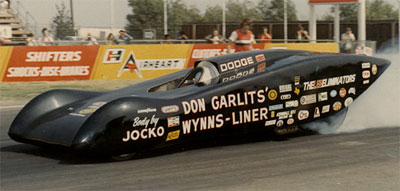 |
Swamp Rat 17 (1972-73): One of Garlits' most notable yet unsuccessful Swamp Rats, the Wynn's Liner was a bold attempt that failed pretty badly. Inspired by the Jocko Johnson-built streamliner run by Jim "Jazzy" Nelson in the late 1950s, Johnson's second go-round with the concept was met with open arms by the aero-infatuated Garlits. Johnson built the mold at his shop in California and transported it to Florida to start building the actual body, but progress was waylaid, according to Garlits, by Johnson's persistent marijuana use. The body was finally completed and placed atop a 180-inch rear-engine dragster chassis, but neither Butch Maas, Don Cook, nor Garlits himself could overcome the 'liner's spooky handling. It was later determined that the car was beginning to fly at half-track, picking all four wheels off the ground. Garlits had had enough and sold the car as a roller to Florida-based rocket-car racers Russell Mendez and Ramon Alvarez, who planned to put a rocket motor into it (the duo famously also had purchased and campaigned "Capt. Jack" McClure's rocket go-kart), but before that could happen, Mendez was killed in their Free Spirit rocket dragster at the 1975 Gatornationals. Garlits got the car back in 1984 and restored it.
Swamp Rat 18 (1972): While constructing the chassis for the Wynn's Liner, Garlits built a second 180-inch wheelbase so that he could get used to driving a shorter-wheelbase car in anticipation of the Liner being the next big thing. Shorty, as the car was dubbed, never handled well (despite a monstrous, dinner-table-sized front wing) and didn't win any races, and Garlits later sold it to a pair of Pennsylvania-based racers, who ran it for several years. In the late 1980s, Garlits came across an ad for the car in National DRAGSTER and bought it back and with Hunnewell restored it in 2007.
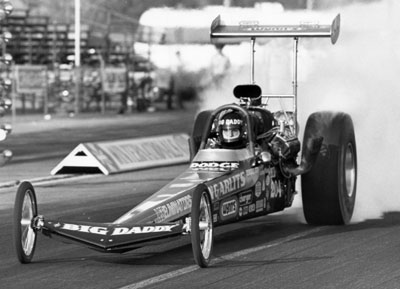 |
Swamp Rat 19 (1973-74): Despite the woes of the Wynn's Liner and Shorty, business was booming for Garlits' chassis shop, so he hired Gary Werner to join the chassis business, which angered Swingle, who quit (again …). Garlits and Werner finished up 19, a car that Garlits dubbed Killer, with good reason. The car ran 5.95 and vaulted Garlits into the Cragar Five-Second Club as its fourth member July 7, 1973, in Portland, Ore., and, when equipped in late 1973 with a new aluminum Milodon block (a 125-pound weight savings), broke both ends of the NHRA national record en route to winning the NHRA Supernationals at Southern California's Ontario Motor Speedway with a clocking of 5.78, 247.25. With chassis business still outweighing hours in the day, Garlits opted to return SR 19 to battle in 1974, and the car exactly duplicated its NHRA record pass at the season-opening AHRA Winternationals at Beeline Dragway in Phoenix. The car was sold at the end of 1974 to Australian racer Graham Withers and, after being cut into shippable pieces, flown Down Under aboard a Qantas 747. Garlits and family made a vacation out of it, planning to show Withers the ropes during a six-race series of exhibitions, but only one of the races came to fruition. Garlits tracked down Withers in the late 1980s and bought the car back. After again being cut down to size, it was sent via sea to Florida, where it was reassembled and put into the museum.
Swamp Rat 20-A (1974): Oddly, this isn't even a Garlits car, and it never was raced. Built by fellow Floridian Glen Blakely, whose cars were near clones of the Garlits-built cars, Garlits bought it to fulfill a late-1974 request from Bill Harrah of the famed Reno, Nev., museum, who wanted a Swamp Rat in his display. Garlits had the car bodied and, with Harrah's approval, painted like a Swamp Rat. The car has been on display since.
Swamp Rat 20-B (1975-80): Built by Garlits and Cook and targeted as Garlits' 1975 car for the upcoming season, it was purchased by fellow Top Fuel racer Richard Holcomb, who made Garlits an offer he couldn’t refuse ("He had more money than dirt!" exclaimed Garlits). Holcomb later sold it to Malone, who ran it through the 1980 Gatornationals. Malone later had the car on display at DeSoto Memorial Speedway, which he owned, then stored it for several years before Garlits came looking for the car and had it restored.
OK, that's the first 20 Swamp Rats (well, many more if you count all of the variations). On Friday, I'll cover Swamp Rats 21 through 34. We may be almost two-thirds of the way through the list, but there's still a ton of history to be made by "Big Daddy" and a few more tales to tell. Thanks for following along.





